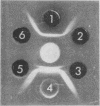Abstract
An antiserum specific for Vibrio cholerae exo-enterotoxin was produced by immunization of a horse with purified choleragenoid, a natural cholera toxoid. The serum has a high titer against the toxin antigen in passive hemagglutination tests and a respectable antipermeability factor activity. It also passively protected against choleragen-induced mouse foot edema. The serum was found to be useful for assaying toxin antigen in crude and refined products by in vitro tests such as radial immunodiffusion, Lf, and quantitative precipitin titrations. Based upon experimental observations, the serum was defined as containing 1,000 flocculating units of anticholera toxin antibody per ml. A flocculating dose, or Lf, of choleragen approximates 1 μg, and that of choleragenoid is 0.625 μg. Formalin toxoids behaved like the parent toxin in these tests. The serum contains approximately 2.2 mg of antibody protein per ml, which appears to be largely, if not entirely, of the Ig(T) type. It is suggested that this serum, which is available in considerable supply, be considered for use as a reference cholera antitoxin. The horse developed symptoms of anaphylactic shock during immunization, suggesting the need for caution in projected studies on toxoid-induced immunity in man.
Full text
PDF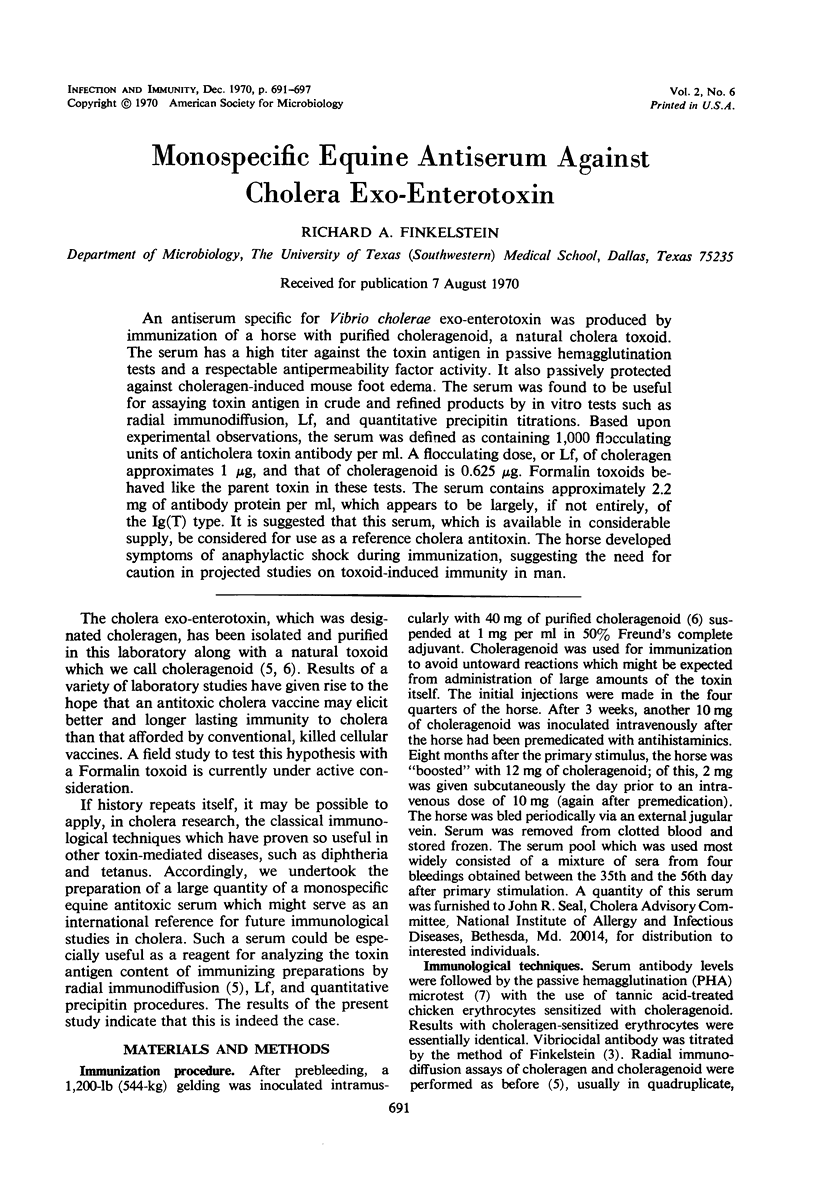
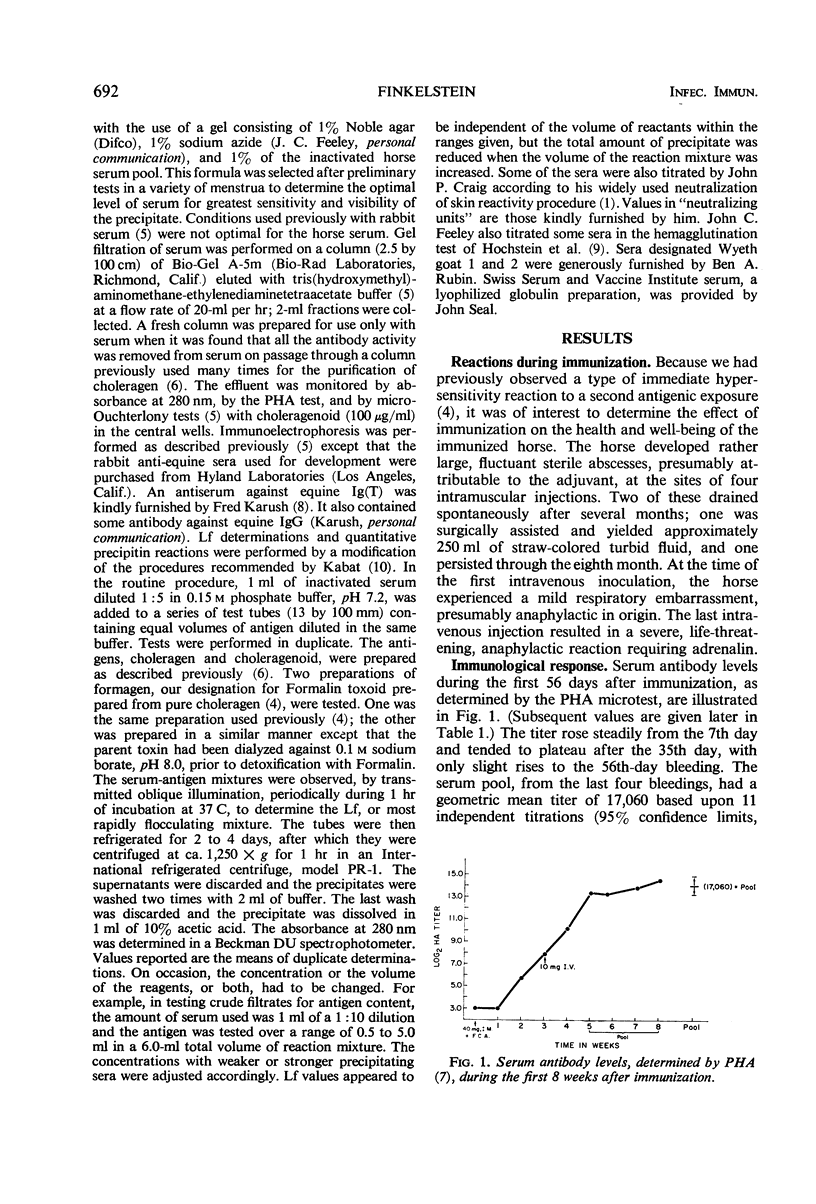
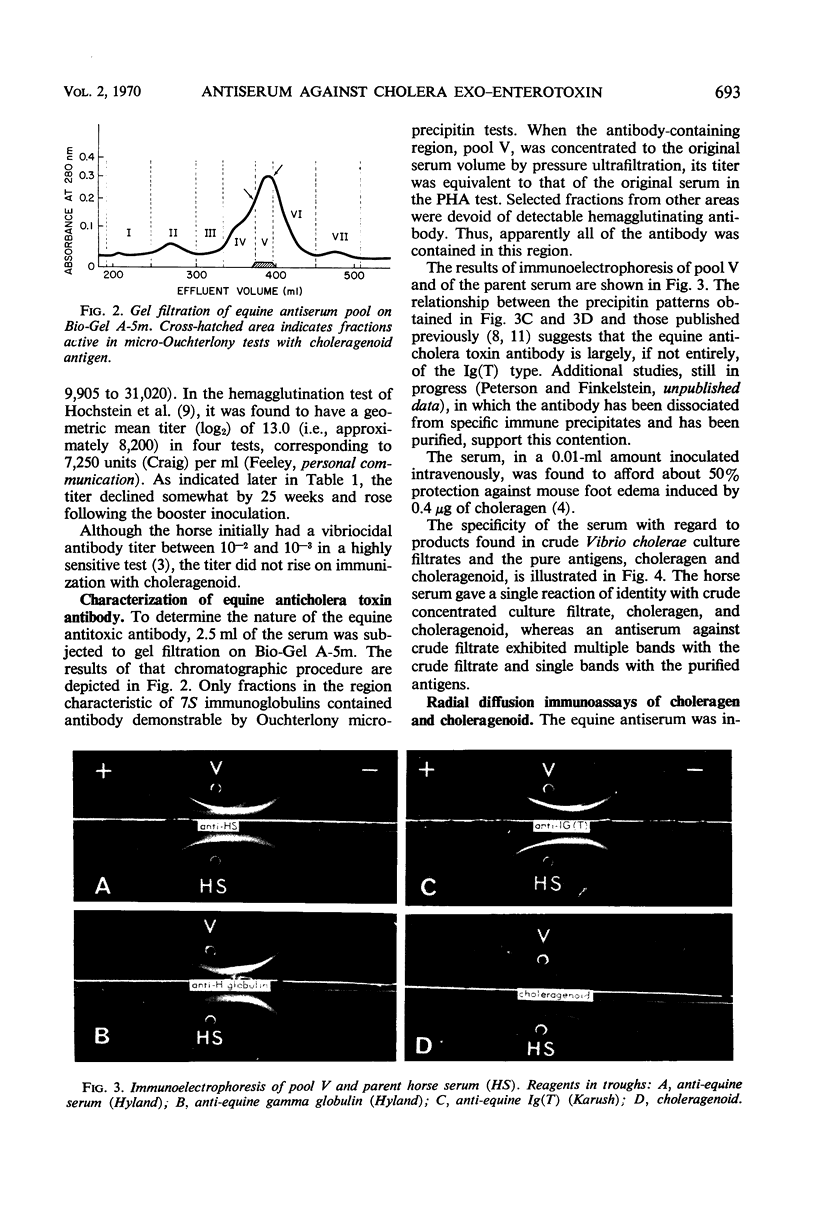
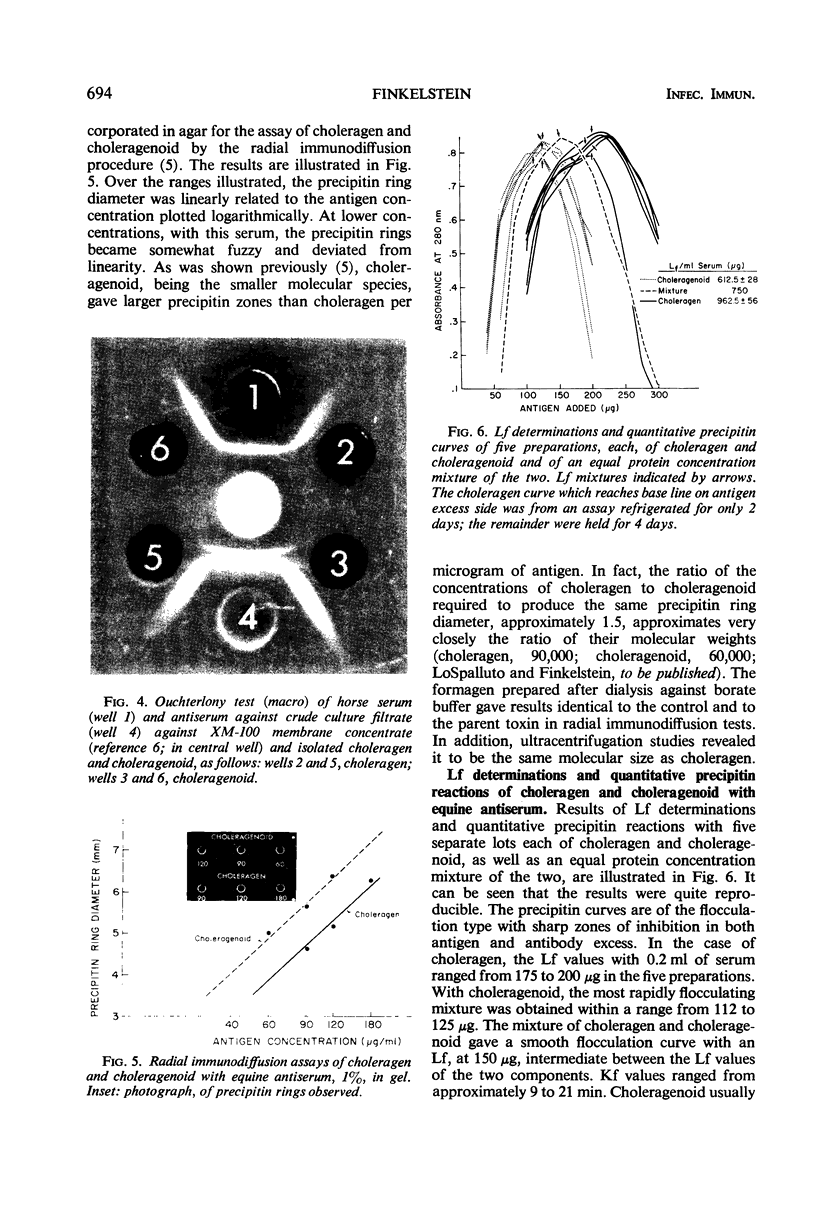
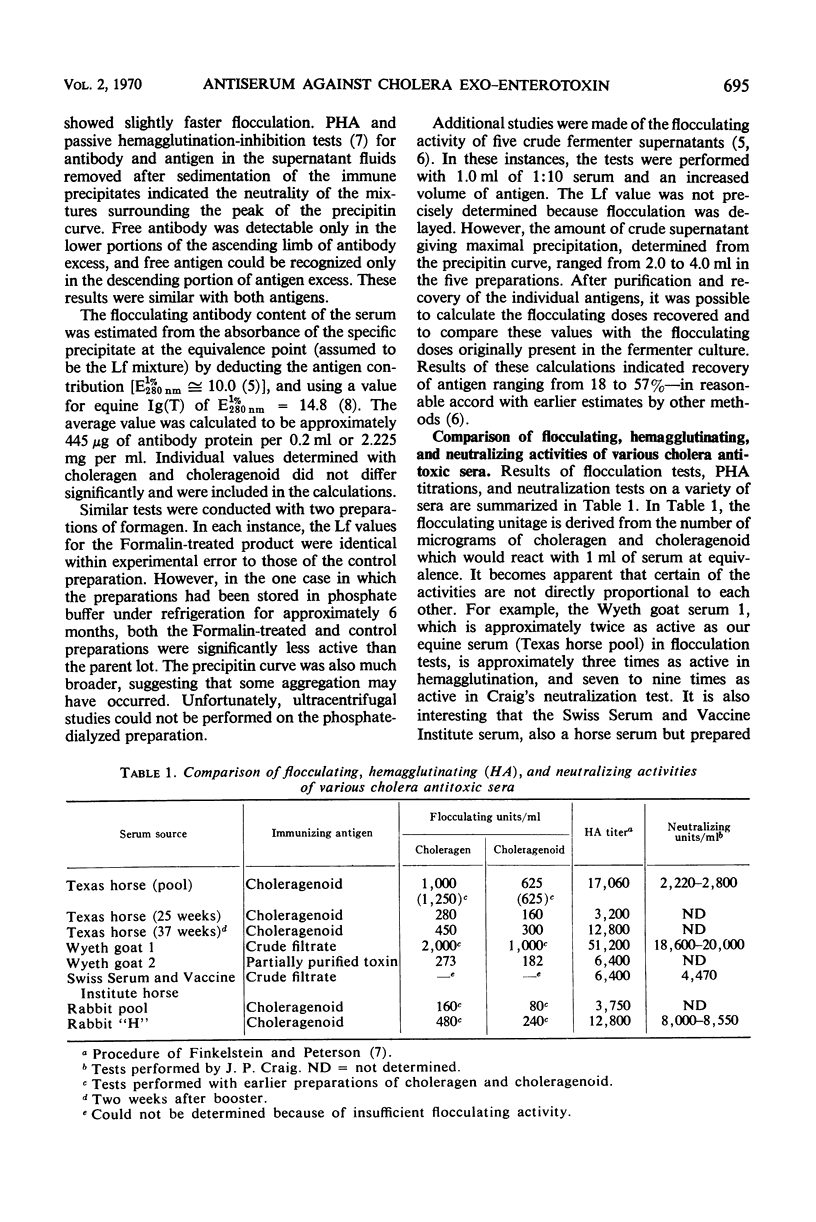
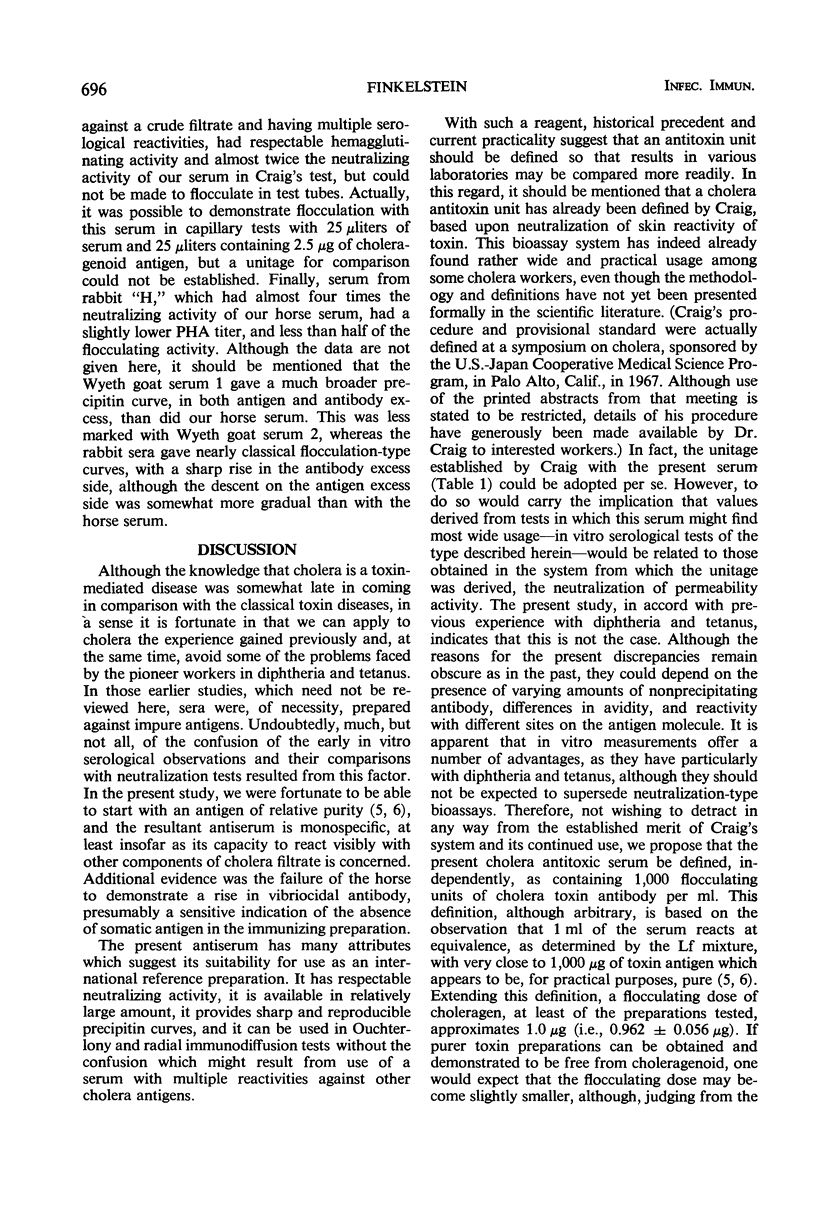

Images in this article
Selected References
These references are in PubMed. This may not be the complete list of references from this article.
- Craig J. P. Some observations on the neutralization of cholera vascular permeability factor in vivo. J Infect Dis. 1970 May;121(Suppl):100+–100+. doi: 10.1093/infdis/121.supplement.s100. [DOI] [PubMed] [Google Scholar]
- Finkelstein R. A., Hollingsworth R. C. Antitoxic immunity in experimental cholera: observations with purified antigens and the rat foot edema model. Infect Immun. 1970 May;1(5):468–473. doi: 10.1128/iai.1.5.468-473.1970. [DOI] [PMC free article] [PubMed] [Google Scholar]
- Finkelstein R. A., LoSpalluto J. J. Pathogenesis of experimental cholera. Preparation and isolation of choleragen and choleragenoid. J Exp Med. 1969 Jul 1;130(1):185–202. doi: 10.1084/jem.130.1.185. [DOI] [PMC free article] [PubMed] [Google Scholar]
- Finkelstein R. A., Peterson J. W. In vitro detection of antibody to cholera enterotoxin in cholera patients and laboratory animals. Infect Immun. 1970 Jan;1(1):21–29. doi: 10.1128/iai.1.1.21-29.1970. [DOI] [PMC free article] [PubMed] [Google Scholar]
- Genco R. J., Yecies L., Karush F. The immunoglobulins of equine colostrum and parotid fluid. J Immunol. 1969 Sep;103(3):437–444. [PubMed] [Google Scholar]
- Hochstein H. D., Feeley J. C., Richardson S. H. Titration of cholera antitoxin levels by passive hemagglutination tests using fresh and formalinized sheep erythrocytes. Proc Soc Exp Biol Med. 1970 Jan;133(1):120–124. doi: 10.3181/00379727-133-34421. [DOI] [PubMed] [Google Scholar]
- NAKAMURA H., KATSURA T. IMMUNOCHEMICAL STUDIES ON DIPHTHERIA ANTITOXIN. VI. COMPARATIVE STUDIES OF HORSE T AND GAMMA ANTITOXINS IN THE QUANTITATIVE PRECIPITIN REACTION, COMPLEMENT FIXATION, AND INDIRECT HEMAGGLUTINATION OF TANNED AND TOXIN-COATED ERYTHROCYTES. Jpn J Exp Med. 1964 Aug;34:167–196. [PubMed] [Google Scholar]




